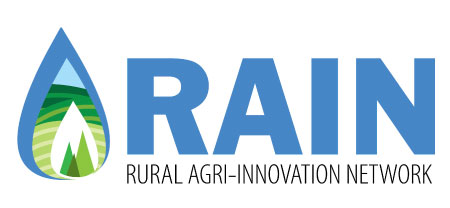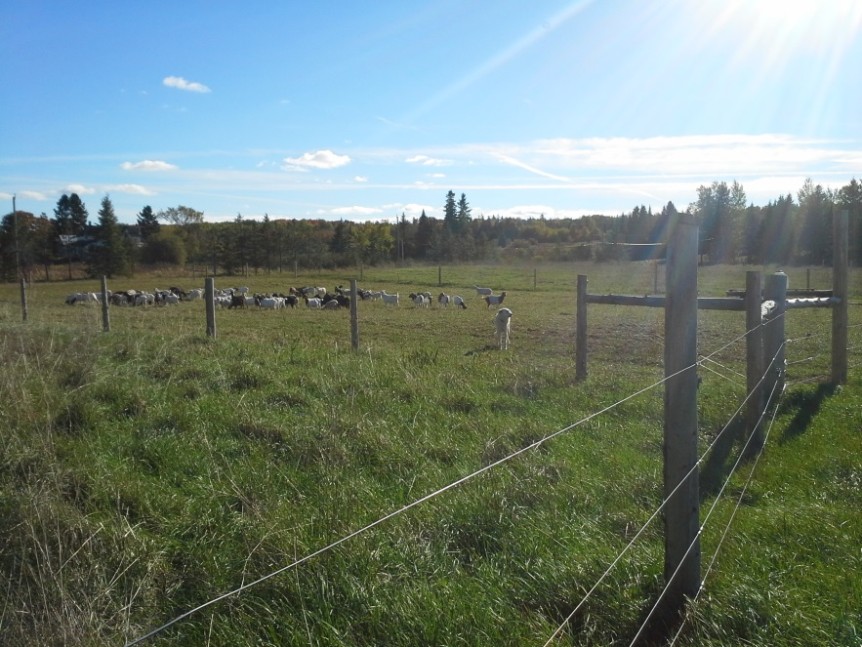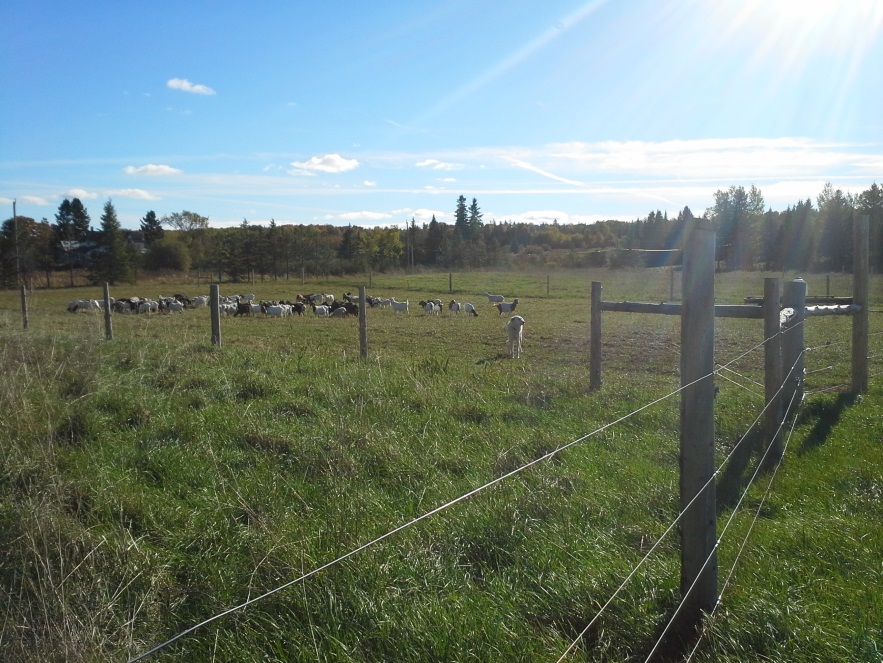Feed costs are a large expense on a livestock operation. Well managed pasture is the cheapest feed source for livestock. Managing grass with yield in mind is comparable to growing field crops.
Cash croppers think about:
- Crop/variety selection
- Nutrient management
- Weed control
By assessing if your pasture contains plants that can meet your livestock’s forage needs, planning how to supply nutrients to your pasture, and keeping weeds in check, farmers can boost pasture yield and reduce the amount of feed they purchase.
Grazing management is key to getting the most out of your grass crop.
Feed costs are a large expense on a livestock operation. In 2010, the average Canadian farm that did not produce crops spent 37% of its operating costs on feed; farms that grew crops and kept livestock recorded an average of 25% of their expenses as feed.1 Growing feed on farm may be a viable option to reduce feed costs.
Well managed pasture is the cheapest feed source for livestock, because it is a perennial crop that does not require labour and equipment to harvest. Managing grass with yield in mind is comparable to growing field crops because plants need the same basic conditions in which to thrive.
Cash croppers think about:
- What crops/varieties they wish to plant
- Providing their crop with the nutrients it needs
- Controlling weeds that reduce their yield
These three factors are important to consider when managing a grass crop for your herd/flock.
Choosing your crop2
Do you know what’s in your field? Rough pastures contain native species of grasses as well as a diverse mix of other plants. These pastures do not yield as much forage as seeded pastures. Seeded pastures have been planted with species and varieties that typically yield well. Unless these pastures are managed carefully their productivity will decrease over time, usually because sown plants are replaced by less productive species. Find out what plants are in your pasture and if they are capable of providing the amount of forage you need for your stock. If not, consider reseeding or rejuvenating your pasture.
OMAFRA has a grass identification factsheet available at: www.omafra.gov.on.ca/english/livestock/beef/facts/06-095.htm
Providing the crop with the nutrients it needs3
Cash crop farmers know that their crops need the right amount of nutrients to reach their yield potential. Pastures are no different. Planning a crop nutrient program starts with a soil test to determine what is already available in the soil.
The next step is to decide what the pasture needs to perform well, and where any additional nutrients will come from. Planting legumes, such as alfalfa or clover, into your pasture can be a cost-effective source of nitrogen, as well as provide protein for your stock. Manure is a good source of phosphorus and potassium. Typical nutrient values of livestock manure are available from OMAFRA, but having your own manure stores tested will provide more accurate numbers to work with.
If there’s still a gap between the amount of nutrients being applied and what the crop will use, see if applying additional fertilizer makes economic sense. OMAFRA’s recommendations for forage crops are based on whether the crop’s response to a nutrient justifies the cost of the fertilizer.
Because animals harvest a pasture crop by grazing it, grazing management is critical in achieving nutrient use efficiency. Small, overgrazed plants have small root systems and cannot reach soil nutrients. Rotational grazing systems are simple to set up and allow a rest period for grazed plants to recover, grow, and make full use of any added nutrients.
Controlling weeds2
The easiest time to reduce weed burdens is during establishment or reseeding. At this time, cultivation is an option. Because most pastures contain more than one species, chemical weed control options are limited. Each herbicide also has a different waiting period after application before it is safe to allow stock to graze.
Once the pasture is established, the best way to manage weeds is by managing grazing. Rotating stock through smaller paddocks gives desirable plants time to recover, while still keeping them in a vegetative state. These plants have enough reserves to grow quickly but do not mature enough to set seed, and this enables them to out-compete weeds.
Topping (mowing) is also an option to prevent annual weeds from setting seed and to weaken perennial weeds. It may take several passes over many years to get pasture weeds under control, as weed seeds can remain viable in the soil for up to 20 years.
References
- http://www.statcan.gc.ca/pub/96-325-x/2014001/article/14084-eng.htm
- OMAFRA Publication 19. Pasture Production. Available at http://www.omafra.gov.on.ca/english/crops/pub19/pub19toc.htm or by calling 1-800-668-9938
- http://www.omafra.gov.on.ca/english/crops/pub811/3fertility.htm


